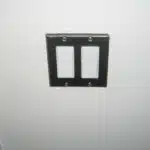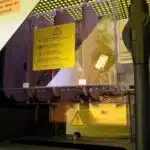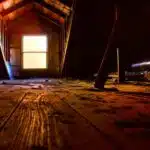Electrical wiring is an essential aspect of our daily lives, powering the machines and devices that we use to carry out everyday tasks. However, it is important to understand how to safely terminate electrical wires in order to avoid potential hazards such as fire or electrocution. As an electrical engineer, it is my duty to ensure that people are equipped with the knowledge necessary for safe and effective electrical work.
One crucial skill in terminating electrical wire is the use of wire caps. Wire caps are small plastic or metal pieces used to connect two or more wires together securely. They come in various sizes and types, each designed for specific wire gauges and applications. In this article, I will explain the fundamentals of terminating electrical wires with wire caps, including how to choose the right type of cap for your project and how to properly install them for a secure connection.
Understanding Electrical Wiring Basics
Electrical wiring is an essential component of any building or structure, whether it be a residential home or commercial building. To ensure the safety and reliability of electrical systems, it is important to have a basic understanding of electrical wiring basics. For example, when terminating electrical wire with wire caps, it is crucial to understand the proper techniques to avoid common mistakes in electrical wiring.
One common mistake in electrical wiring is not properly stripping the insulation off the wire before attaching a wire cap. This can result in poor connections and potential hazards such as fires or electrocution. Additionally, failing to follow electrical codes and regulations can lead to unsafe conditions that put both individuals and properties at risk.
Understanding electrical codes and regulations is critical for anyone working with electrical wiring. These guidelines are put in place to ensure that electrical systems are installed safely and correctly. It is important to consult these standards when performing any kind of electrical work, from simple repairs to major installations. By following these guidelines, you can help prevent accidents and ensure that your work meets industry standards for safety and quality.
To ensure safe installation of electrical wiring components like wire caps, it’s essential to take additional safety precautions while working with electricity. These measures include wearing appropriate protective gear such as gloves and goggles, turning off power sources before starting work, and using insulated tools designed specifically for handling live wires. Following proper safety procedures can help prevent accidents and injuries while working with electricity.
Safety Precautions When Working With Electrical Wires
- Appropriate personal protective equipment must always be worn when working with electrical wires to avoid contact with electrical currents.
- Prior to working with electrical wires, the power source must be turned off and the wires must be tested to ensure they are not live.
- Working in a dry, well-ventilated area with adequate lighting is necessary to ensure safety when working with electrical wires.
- Tools and materials used should be in good condition and regularly inspected for damage.
- All electrical wires must be securely fastened with wire caps to ensure that a strong connection is made and the risk of shock is minimized.
- Proper installation of wire caps should follow the manufacturer’s instructions and be tested for correct electrical continuity prior to use.
Wear Protective Gear
Electrical work can be dangerous, and it is crucial to take appropriate safety precautions when working with electrical wires. One of the most important steps in ensuring safety is wearing protective gear. This includes gloves, goggles, and a face shield to protect against potential electrical shock or burns.
The importance of safety gear cannot be overstated. It provides an additional layer of protection for your hands, eyes, and face while you work with live wires. Without this protective gear, you are at risk of serious injury or even death from electric shocks or burns. Therefore, it is essential to always wear the appropriate safety gear before starting any electrical work.
When using wire caps to terminate electrical wires, there are several common mistakes to avoid. For instance, failing to strip the wire sufficiently or twisting the cap too loosely can result in a poor connection that may cause arcing or overheating. As such, it is essential to follow manufacturer instructions carefully and ensure that all connections are secure before turning on the power supply. By taking appropriate measures and following best practices when using wire caps, you can help ensure both your safety and that of others around you.
Turn Off Power
When working with electrical wires, it is essential to take precautionary measures to ensure safety. One of the most important safety procedures is to turn off the power supply before beginning any work. This step will prevent electric shock or burns that can be caused by live wires.
As an electrical engineer, it is crucial to emphasize the importance of turning off the power before starting any work. Failure to do so can lead to serious injury or death. It is recommended that you double-check the power supply by using a voltage detector to ensure that there is no electrical current flowing through the wires.
In addition, it is necessary to keep in mind that turning off the power does not guarantee complete safety. Always wear appropriate protective gear and follow manufacturer instructions when working with electrical wires. By taking these precautions, you can help ensure your safety and that of others around you.
Work In Dry Area
Another safety precaution that must be taken when working with electrical wires is to work in a dry area. Water and electricity do not mix, so it is essential to ensure that the workspace is free from any moisture or wetness. This includes making sure that your hands are dry before handling any tools or equipment.
In order to maintain a dry area, it is important to use appropriate tools and equipment that are specifically designed for electrical work. For example, using insulated tools and rubber gloves can help prevent electric shock by providing an additional layer of protection between you and the electrical current. Additionally, using a non-conductive mat on the floor can reduce the risk of electric shock if you accidentally drop a tool.
While working in a dry area is important for safety reasons, it is also necessary to remember that other safety measures should also be taken. Always turn off the power supply before beginning any work, wear appropriate protective gear, and follow manufacturer instructions. By taking these precautions and ensuring a dry workspace, you can help reduce the risk of injury while working with electrical wires.
Types Of Wire Caps And Their Applications
Ensuring safety while working with electrical wires is of utmost importance. In the previous section, we discussed the precautions that need to be taken for safe handling of electrical wires. Now, let us move on to our next topic – ‘Types of Wire Caps and Their Applications’.
Wire caps are used to terminate electrical wires in a safe and secure manner. However, wire cap compatibility is an essential factor that needs to be considered before selecting a wire cap for your project. Using an incompatible wire cap can result in fire hazards or electric shock. Hence, it is recommended to consult an expert before choosing a wire cap.
Common wire cap mistakes include using too small or too large caps for the wires, leaving exposed conductors, and failing to twist the wires properly before installing the cap. These mistakes can lead to loose connections or short circuits which can be dangerous. Therefore, it is necessary to follow proper techniques and guidelines when terminating electrical wires with wire caps.
Choosing the right wire cap for your project depends on various factors such as the size of the conductor, type of insulation used, and environmental conditions like temperature and humidity. In our subsequent section, we will discuss different types of wire caps available in the market and their applications so that you can make an informed decision about selecting a suitable wire cap for your project.
Choosing The Right Wire Cap For Your Project
Wire caps, also known as wire connectors or twist-on wire connectors, are an essential component in terminating electrical wires. They provide a safe and secure connection between two or more wires, preventing the risk of electrical shock or fire hazard. When choosing a wire cap for your project, it is important to consider its compatibility with the type of wire you are using.
Wire caps come in different sizes and shapes, each designed to fit specific wire gauges and types. It is crucial to match the size of the wire cap with the gauge of your wire to ensure a tight connection. Color coding is another useful feature of wire caps that can help identify the right size for your application. Typically, different colors represent different sizes, making it easier to select the appropriate connector quickly.
The selection of the right wire cap is critical for a successful wiring job. Using an incompatible wire cap or mismatching sizes can lead to loose connections and potential safety hazards. Always refer to manufacturer specifications and guidelines when selecting a suitable connector for your project. Understanding how to choose the correct wire cap will streamline your work process and make for efficient installations in any electrical system. The next step involves understanding how to work with different wire gauges and sizes effectively.
Understanding Wire Gauge And Size
Wire gauge is a measurement used to classify the size of electrical wire. There are two primary types of electrical wire, stranded and solid. Stranded wire is composed of multiple wires intertwined for flexibility and solid wire is composed of a single conductor. Wire sizing charts can be used to determine the correct gauge for a particular application based on the current draw and the length of the wire. The resistance of the wire increases as the gauge number decreases, and as a result, it is important to use the correct gauge for the intended application. In addition, larger gauge wires are required for higher voltage applications. Wire sizing charts can be found online and provide a useful resource for determining the correct gauge for a given application.
Wire Gauge Measurement
Understanding wire gauge and size is crucial in terminating electrical wires with wire caps. As an electrical engineer, it is important to know the appropriate wire gauge for specific applications to ensure safe and efficient installations. Wire gauge measurement determines the diameter of a wire, with smaller numbers indicating larger diameters and vice versa. It is essential to match the wire gauge with the amperage rating of the circuit to prevent overheating and potential hazards.
Wire cap compatibility is also a vital consideration when terminating electrical wires. Wire caps are connectors used to join two or more wires together, providing insulation and protection against electrical shock. Different wire caps have varying compatibility with different wire gauges, so it is necessary to choose the right size for a secure connection. Additionally, ensuring that the wire cap insulation options are compatible with the application is crucial in preventing any risks of electrocution or fire hazards.
In summary, understanding wire gauge measurement and choosing appropriate wire caps are critical in safely terminating electrical wires. As an electrical engineer serving others, it is important to prioritize safety measures in every installation process. By selecting suitable wire gauge sizes and compatible wire cap insulation options, one can ensure secure connections and prevent any potential dangers associated with faulty installations.
Types Of Wires
Understanding wire gauge and size is essential for electrical engineers to ensure safe and efficient installations. Besides the wire gauge, it is also crucial to consider the types of wires being used in an electrical circuit. Different types of wires have varying levels of conductivity, insulation, and resistance, which can affect the performance and safety of an installation.
The most common types of wires used in electrical circuits include copper, aluminum, and silver. Copper wires are preferred due to their excellent conductivity and durability. They are commonly used in residential and commercial applications for wiring outlets, switches, and lighting fixtures. Aluminum wires are cheaper than copper but have lower conductivity and require larger wire gauges for similar amperage ratings. Silver wires have the highest conductivity but are rarely used due to their high cost.
Another important consideration when selecting types of wires is their insulation properties. Wires can be insulated with different materials such as PVC, rubber, or Teflon. The type of insulation used depends on the application’s requirements such as temperature rating, moisture resistance, or flame retardance. Choosing the appropriate insulation material ensures that the wire will not cause any hazards or malfunctions during use.
In conclusion, understanding the types of wires is a crucial aspect of terminating electrical wires safely. Electrical engineers must consider both wire gauge measurement and wire insulation properties when selecting suitable wires for specific applications. By ensuring proper conductivity and insulation characteristics in every installation process, one can provide secure connections while preventing any potential risks associated with faulty wiring systems.
Wire Sizing Charts
Understanding wire gauge and size is crucial for electrical engineers to ensure that the appropriate wires are used in an installation. However, determining the wire cap selection and wire gauge determination can be challenging for those who are not familiar with it. This is where wire sizing charts come in handy. Wire sizing charts provide a quick reference guide for selecting the correct wire size based on the amperage and distance of the circuit.
Wire sizing charts typically list the ampacity rating of each wire size, which is the maximum amount of current that a particular wire can carry safely without overheating or causing damage to the insulation. The chart also takes into account factors such as voltage drop, temperature rating, and insulation type to ensure that the selected wire size can handle the load requirements of the circuit. By using a wire sizing chart, electrical engineers can select wires that are safe and efficient for their specific application.
It’s important to note that while using a wire sizing chart can be helpful, it should not be solely relied upon when selecting wires for an installation. Other factors such as environmental conditions, mechanical stress, and electromagnetic interference should also be considered to ensure that the wiring system functions properly. Electrical engineers should consult with manufacturers’ guidelines and regulations in addition to using a wire sizing chart to make informed decisions about selecting suitable wires for various applications.
How To Prepare Wires For Termination
Symbolism is a powerful tool to convey abstract concepts. In electrical engineering, wires can be compared to the veins in our bodies that carry blood to and from the heart. Just like how our veins need proper care to function well, electrical wires also require preparation techniques for successful termination.
Preparation techniques for terminating electrical wires include stripping and twisting. Stripping involves removing the outer insulation of the wire to expose the conductor. Twisting involves combining two or more wires together by twisting them in a clockwise direction using pliers. Common mistakes to avoid during preparation include using dull wire cutters, cutting too much insulation off, and not twisting the wires tightly enough.
To properly strip and twist wires, one must first use sharp wire cutters to make a clean cut on the insulation without damaging any of the conductors inside. Then, carefully remove just enough insulation to expose the length of conductor needed for termination. Finally, twist the exposed conductors tightly together with pliers to ensure they stay connected even under stress. By following these techniques and avoiding common mistakes, one can successfully terminate electrical wires with wire caps.
Proper Stripping And Twisting Techniques
After preparing the wires for termination, it is crucial to ensure proper insulation techniques are utilized. Insulation provides a protective layer around the wire that prevents electrical shock and short circuits. It is best practice to use wire caps during termination as they offer a secure connection while maintaining insulation.
However, common stripping mistakes can lead to improper termination of wires even with the use of wire caps. One mistake is leaving too much bare wire exposed, which can lead to fraying and possible contact with other exposed wires. Another mistake is not stripping enough insulation from the wire, leading to a loose connection that may come apart over time.
To avoid these mistakes, proper stripping and twisting techniques should be employed before inserting wires into wire caps. The table below outlines the recommended strip lengths based on wire gauge size and how many twists should be applied for optimal connection strength.
| Wire Gauge | Strip Length | Number of Twists |
|---|---|---|
| 12 | 5/8 inch | 2 |
| 14 | 1/2 inch | 3 |
| 16 | 3/8 inch | 3 |
By following these guidelines for strip length and twisting, you can ensure a secure connection between the wires without any common stripping mistakes that could cause issues down the line. With properly stripped and twisted wires in hand, you can confidently insert them into wire caps for safe and efficient electrical connections.
Inserting Wires Into Wire Caps
When inserting wires into wire caps, it is important to follow proper insertion techniques. This ensures a secure connection and prevents any potential electrical hazards. First, strip the insulation from the end of the wire to expose a sufficient amount of copper. Then, twist the exposed copper strands together to create a tight bundle.
Next, select a wire cap that matches the size and gauge of the wires being connected. Place the twisted wire bundle into the cap and twist it clockwise until it is fully seated on the wire. It is important to ensure that all wires are fully inserted into the cap and that there are no loose strands sticking out.
If you encounter any issues during this process, there are troubleshooting tips that can help. If the wires do not seem to be making a secure connection or if they easily slip out of the cap, double check that all strands are twisted tightly together before inserting them into the cap. Additionally, make sure that you have selected an appropriate sized cap for your wires as using one that is too large or too small can lead to an insecure connection.
Moving forward, understanding how to use crimping tools is another important aspect of terminating electrical wire connections. By following proper insertion techniques and troubleshooting tips, you can ensure safe and secure electrical connections in your projects.
How To Use Crimping Tools
Crimping tools are essential for terminating electrical wires with wire caps. A crimping tool is a device used to compress or deform a metal or plastic component around another object, such as a wire, to create a secure connection. Crimping techniques are widely used in the electrical industry because they provide an efficient and reliable method for connecting wires.
Different crimping methods are available depending on the application and type of wire being used. The most common types include hand-held crimpers, hydraulic crimpers, and pneumatic crimpers. Hand-held crimpers are suitable for small jobs, while hydraulic and pneumatic crimpers are ideal for larger projects that require more force.
When using a crimping tool, it is important to ensure that the correct size of wire cap is selected to fit the gauge of the wire being terminated. It is also crucial to follow the manufacturer’s instructions carefully to achieve a proper connection. By mastering different crimping methods, electrical engineers can terminate wires efficiently and securely, ensuring that electrical systems function properly.
- Always select the appropriate size of wire cap for the gauge of wire being terminated.
- Follow manufacturer’s instructions carefully when using a crimping tool.
- Use hand-held crimpers for small jobs and hydraulic or pneumatic crimpers for larger projects.
- Practice different crimping techniques to become proficient at terminating wires with wire caps.
The use of proper techniques when utilizing a crimper plays an important role in ensuring secure electrical connections. However, there may be instances where soldered connections may be required instead of using a crimper alone. In such situations, understanding soldering techniques for wire caps will help ensure that electrical systems function properly without any issues or failures due to poorly terminated wires.
Soldering Techniques For Wire Caps
Having learned how to use crimping tools in the previous section, we will now delve into soldering techniques for wire caps. Soldering is a process of joining two or more metal components by melting a filler metal and allowing it to flow into the joint. In electrical wiring, soldering is used to create secure connections between wires and wire caps.
Soldering tips include ensuring that the wires are clean and free of any debris before beginning the process. Additionally, using flux can help to remove oxidation from the surface of the wires and promote better adhesion between the wires and filler metal. It is also important to heat both the wires and wire cap evenly to prevent cold solder joints, which can weaken the connection over time.
Common mistakes to avoid when soldering include overheating the wires or wire cap, which can lead to damage and make it difficult for future repairs or alterations. Another mistake is not using enough filler metal, which can result in a weak connection that may come loose over time. Taking care during the soldering process can help prevent these issues and ensure a strong, long-lasting connection.
Testing your connections is an important step in any electrical wiring project. By using a multimeter or continuity tester, you can check that there is conductivity between your newly joined wires and verify that there are no short circuits or open circuits present. This step can help prevent damage to your components or potential safety hazards down the line. With proper technique and attention to detail, soldered wire caps can provide reliable connectivity for years to come.
Testing Your Connections
After connecting the wires with wire caps, it is crucial to test your connections for functionality and safety. Testing procedures serve as a critical step in ensuring that your electrical system operates correctly and safely. One effective testing method is to use a voltage tester, which can detect any live wires and confirm if all connections are properly connected.
If you have identified any issues during your testing procedures, troubleshooting techniques will be necessary to fix them. Common problems include loose connections or damaged wires that require reconnection or replacement of the damaged section. Another issue could be miswiring, which requires a review of the wiring diagram to ensure proper connection.
In summary, testing your electrical wire connections is an essential step towards ensuring safety and efficiency in your electrical system. If any issues arise during testing, it is important to utilize appropriate troubleshooting techniques to identify and fix the problem. The subsequent section will provide tips for troubleshooting common issues encountered while working with electrical wire connections.
Tips For Troubleshooting Common Issues
- It is important to check the connections of electrical wires during troubleshooting of common issues to ensure the wires are correctly wired and connected.
- A multimeter can be used to detect any problems in the electrical current and to measure the voltage in the circuit.
- It is important to understand wiring diagrams in order to effectively troubleshoot electrical issues, as diagrams provide a visual representation of the electrical components and their connections.
- A multimeter can be used to ensure the continuity of the circuit by measuring the resistance of the electrical components.
- To terminate electrical wires with wire caps, the caps must be of the correct size in order to securely hold the wires in place.
- The wire caps should be crimped onto the wires with a pair of pliers to ensure a secure connection and to prevent any electrical faults.
Check Connections
Common mistakes while terminating electrical wires can lead to faulty wire connections, which can cause a variety of problems. One of the most common issues is a weak connection, which can result in power loss or even spark and fire hazards. As an electrical engineer, it is important to be aware of these potential issues and take steps to prevent them.
To troubleshoot faulty wire connections, one of the first things to check is the tightness of the wire caps. Many people make the mistake of not tightening them enough, which can lead to loose wires and poor connections. It is also important to ensure that all wires are properly stripped before being inserted into the cap. Failure to strip wires correctly can lead to a weak connection or even a short circuit.
Another key factor when checking connections is making sure that there are no stray strands of wire sticking out from the cap. These strands can cause shorts between wires or even touch other conductive materials, leading to dangerous situations. By carefully checking for these issues and taking steps to address them early on, you can ensure that your electrical wiring is safe and reliable for years to come.
Use A Multimeter
When it comes to troubleshooting common issues in electrical wiring, using a multimeter is an essential tool for any electrical engineer. A multimeter is a device that can measure several different electrical properties, including voltage, current, and resistance. By using a multimeter properly, you can quickly identify the source of electrical problems and take steps to fix them.
One of the most important things to keep in mind when using a multimeter is proper testing techniques. For example, when testing for voltage, it is crucial to make sure that the probes are inserted into the correct ports on the meter and that they are making contact with the correct parts of the circuit. Additionally, it is important to use the appropriate range settings on the meter so that you get accurate readings.
Another key benefit of using a multimeter for troubleshooting is that it allows you to test various components of a circuit individually. This can help you isolate specific problem areas and determine whether a component needs to be repaired or replaced. By taking the time to use a multimeter correctly and thoroughly test your circuits, you can ensure that your electrical systems are safe and reliable for years to come.
Understand Wiring Diagrams
As electrical engineers, we often encounter problems in electrical wiring that require troubleshooting. To effectively resolve these issues, it is essential to have a solid understanding of how to read wiring schematics. Wiring diagrams are graphic representations of an electrical system or circuit that show the components and their connections. These diagrams provide valuable information on the layout and function of an electrical system, making it easier for us to identify the source of any electrical issues.
By learning how to read wiring schematics, we gain a better understanding of the overall system and can quickly determine which components may be causing problems. For example, if a light switch isn’t working correctly, we can use a wiring diagram to identify all related components and test them one-by-one until we find the culprit. This approach allows us to isolate the issue without having to check every single component in the circuit.
When troubleshooting electrical issues, it’s important to keep in mind that not all diagrams are created equal. Some are straightforward while others may be more complex or difficult to interpret. Therefore, it’s crucial to take time to understand each diagram thoroughly before starting any work on the system. By doing so, we can save time and prevent additional problems from arising due to misinterpretation of the diagram.
In conclusion, understanding how to read wiring schematics is an invaluable skill for any electrical engineer. It enables us to troubleshoot common issues quickly and effectively by isolating problem areas within an electrical system. By taking time to study each diagram carefully, we ensure that our work is accurate and reliable while also preventing additional problems from occurring due to misinterpretation of the schematic.
When To Seek Professional Help
Did you know that electrical fires account for approximately 51,000 home fires each year in the United States? These fires cause over 500 deaths, 1,400 injuries, and $1.3 billion in property damage. With such alarming statistics, it is important to take electrical safety seriously.
Knowing when to call an electrician is crucial for preventing electrical hazards. While some minor issues can be resolved with basic knowledge and tools, there are certain situations where professional help is necessary. Here are three instances when you should seek the assistance of a licensed electrician:
- If your circuit breaker trips frequently or your fuses blow often.
- If you experience frequent power surges.
- If you notice any signs of faulty wiring such as flickering lights or burning smells.
It cannot be emphasized enough how important it is to prioritize safety when dealing with electricity. Attempting to fix certain electrical issues on your own can lead to serious injury or even death. When in doubt, always call an electrician for their expertise and guidance.
To ensure proper electrical terminations, following best practices is essential. By properly terminating wires with wire caps and ensuring that all connections are secure, you can prevent potential hazards and ensure the longevity of your electrical system. In the next section, we will discuss these best practices in more detail and provide tips for safe installation techniques.
Best Practices For Electrical Terminations
A critical aspect of electrical work is ensuring that all terminations are properly made. A termination is the point where a conductor, such as an electrical wire, connects to another component or device. Wire caps, also known as wire nuts, are commonly used in electrical work to terminate wires. They come in different sizes and colors depending on the gauge of the wire being used.
One common mistake made when using wire caps is not twisting the wires together tightly enough before adding the cap. Loose connections can lead to arcing, which can cause damage to equipment or even start a fire. It’s important to twist the wires together firmly and evenly so that they make good contact with each other.
If troubleshooting techniques need to be employed for faulty terminations, one method is using a multimeter to test for continuity between the connected wires. If there is no continuity, then there may be a problem with either the connection itself or with the wire leading up to it. Another technique is visually inspecting the connection for signs of overheating or melting due to improper installation.
Resources for further learning include online tutorials and instructional videos that demonstrate proper termination techniques using wire caps. Additionally, manufacturer websites often provide specific instructions and recommendations for their products. As always, following best practices and safety guidelines is crucial when working with electricity to ensure proper terminations and prevent potential hazards.
Resources For Further Learning
To truly master the art of terminating electrical wires with wire caps, one must delve deep into the vast ocean of knowledge and resources available online. It might seem like a trivial task at first glance, but proper wire termination is crucial for ensuring the safety and reliability of any electrical system. Fortunately, we live in an age where information is readily accessible, and there are countless online tutorials and instructional videos that can guide us through this process.
Online tutorials are a great way to get started on your journey towards becoming a wire termination expert. These tutorials cover everything from basic terminology to advanced techniques, making them suitable for beginners and seasoned professionals alike. Additionally, many of these resources are available for free and can be accessed from anywhere with an internet connection.
Instructional videos take things one step further by providing a visual representation of the wire termination process. Watching someone perform this task in real-time can help you understand the nuances involved and give you a better idea of what to expect when working with similar components in the future. Furthermore, some instructional videos come with detailed explanations, diagrams, and annotations that make it easier to follow along.
In summary, anyone looking to learn how to terminate electrical wires with wire caps has an abundance of resources at their disposal. Online tutorials and instructional videos provide comprehensive coverage of every aspect related to this topic, making it easy for anyone to acquire the necessary skills. So don’t hesitate – start exploring these resources today and unlock your full potential as an electrical engineer!
Conclusion
Understanding how to terminate electrical wire with wire caps is a crucial skill for any electrical engineer. It ensures that the connections are secure and safe, preventing potential hazards such as short circuits and electrocution. By following the proper safety precautions and selecting the appropriate wire cap for your project, you can ensure a successful termination.
In conclusion, mastering the art of terminating electrical wires with wire caps is an essential skill for anyone working in the field of electrical engineering. The consequences of improper terminations can be catastrophic, leading to injury or even death. Therefore, it is vital to take every precaution necessary to ensure that all connections are secure and stable. With knowledge of the basic wiring principles, appropriate safety protocols, and a wide range of wire caps at your disposal, you can confidently tackle any termination project with ease and efficiency.
Image Credits
- “Identifying and terminating wires in electrical panels in a power substation Queens. 06-26-19” by MTA C&D – EAST SIDE ACCESS (featured)

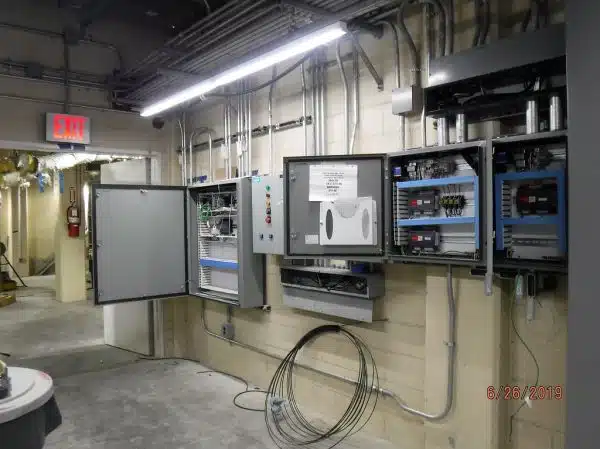
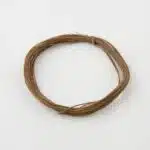

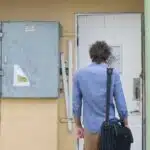




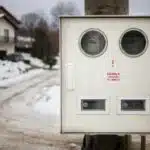

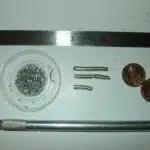



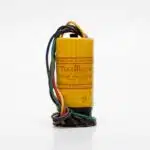



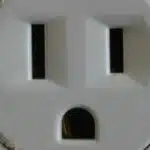




![How To Replace A Single-Pole Wall Switch 24 '... All in all it's just another [switch] in the wall.' ...](https://green-life.blog/wp-content/uploads/2023/05/17xmP5qMtVjq-150x150.jpg.webp)
